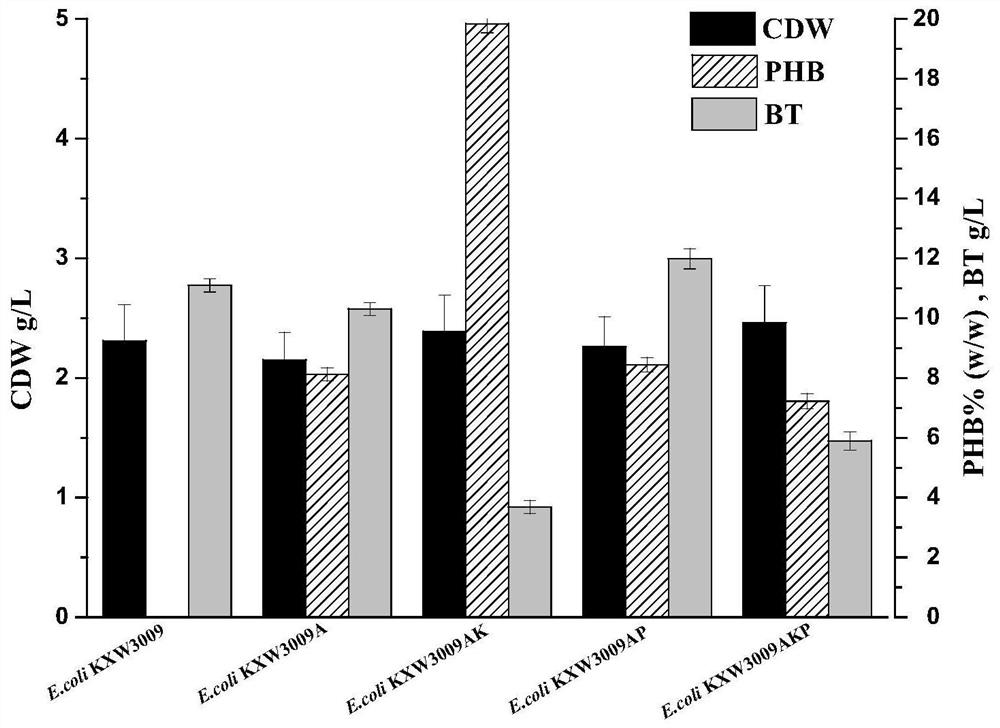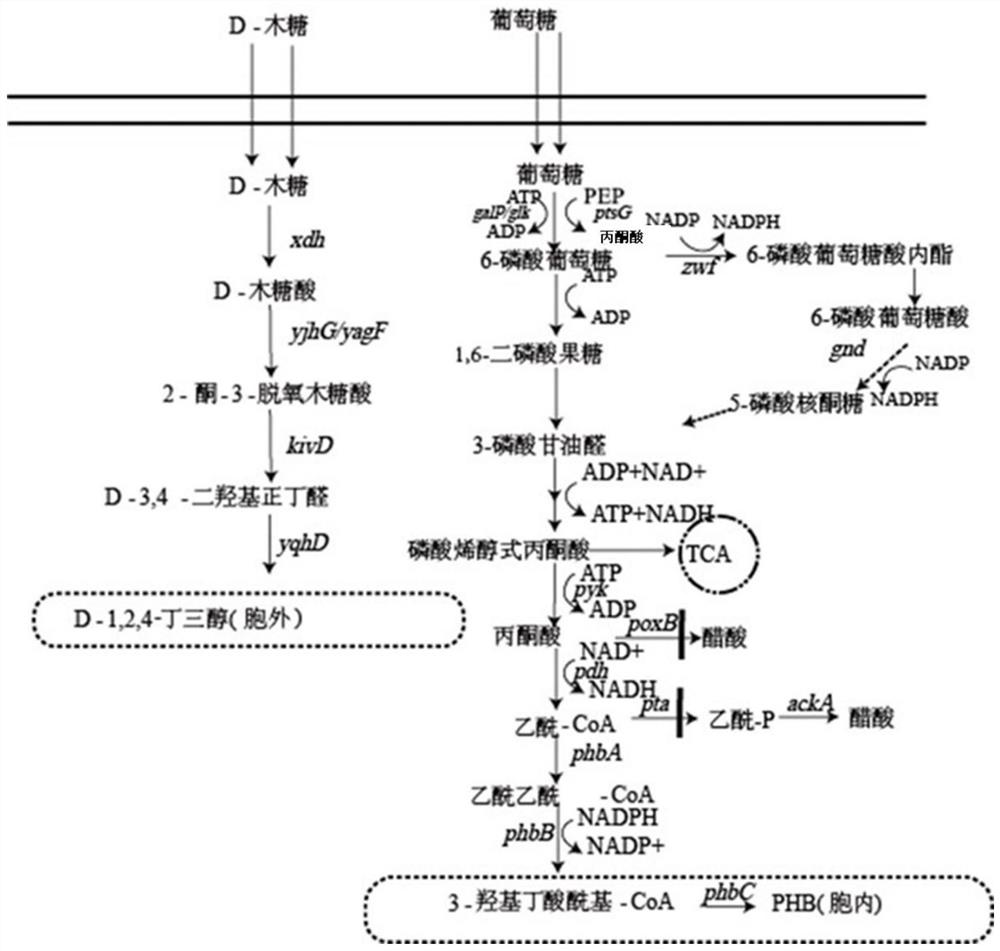Method for co-production of D-1,2,4-butanetriol and PHB by metabolic modification of escherichia coli, and application
A technology of Escherichia coli and butanetriol is applied in the field of genetic engineering to achieve the effect of reducing the generation and discharge of three wastes and reducing the cost of fermentation
- Summary
- Abstract
- Description
- Claims
- Application Information
AI Technical Summary
Problems solved by technology
Method used
Image
Examples
Embodiment 1
[0033] Example 1: Construction of a recombinant strain that co-produces PHB and D-1,2,4-butanetriol
[0034]phbCAB comes from Alcaligenes eutropha, its nucleotide sequence is shown in GenBank: MH558939.1, phbCAB is linked to the restriction site SacI and SalI of pRSFDuet-tac vector through homologous recombinase (ABclonal company) enzyme ( The construction method of the pRSFDuet-tac vector is as follows: the nucleotide sequence tac shown in SEQ ID NO.1 is connected to the BamHIII and SalI sites of the pRSFDuet vector to construct the pRSFDuet-tac-phbCAB expression vector, and the expression vector Transform into Escherichia coli BL21, grow single clones at 37°C, pick single clones and sequence verification, obtain positive transformants, extract plasmids from positive transformants, and obtain pRSFDuet-tac-phbCAB expression vector, express The vector pRSFDuet-tac-phbCAB was transformed into E.coli KXW3009, and the recombinant strain E.coli KXW3009A was obtained through sequenc...
Embodiment 2
[0038] Example 2: Fermentative production of PHB and D-1,2,4-butanetriol by recombinant strains
[0039] Inoculate E.coli KXW3009 and recombinant strains E.coli KXW3009A, E.coliKXW3009AK, E.coli KXW3009AP, and E.coli KXW3009AKP in liquid LB medium respectively, and cultivate them with shaking at 37°C and 200r / min according to 1mL / 100mL inoculum was transferred to fermentation medium, 37°C, 200r / min, culture OD 600 =0.6~0.8, add 0.5mmol·L -1 IPTG, continue to induce culture for 48 hours, and the fermentation ends. After the fermentation was completed, the yields of PHB and D-1,2,4-butanetriol were measured.
[0040] The results showed that overexpression of phbCAB of Alcaligenes eutropha in E.coli KXW3009 could realize co-production of 1,2,4-butane in E.coli KXW3009A, E.coli KXW3009AK, E.coli KXW3009AP, E.coli KXW3009AKP Alcohol and PHB. And the PHB yield of the strain E.coli KXW3009AK overexpressing the glk gene can reach 19.83%, which is significantly higher than that of ...
PUM
 Login to View More
Login to View More Abstract
Description
Claims
Application Information
 Login to View More
Login to View More - R&D
- Intellectual Property
- Life Sciences
- Materials
- Tech Scout
- Unparalleled Data Quality
- Higher Quality Content
- 60% Fewer Hallucinations
Browse by: Latest US Patents, China's latest patents, Technical Efficacy Thesaurus, Application Domain, Technology Topic, Popular Technical Reports.
© 2025 PatSnap. All rights reserved.Legal|Privacy policy|Modern Slavery Act Transparency Statement|Sitemap|About US| Contact US: help@patsnap.com


